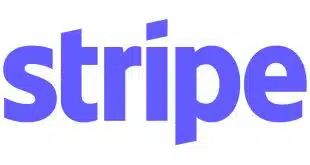By John Stewart
Wednesday’s announcement by MasterCard Inc. that its MasterPass digital-payments service has signed up home-furnishings and décor e-retailer Wayfair, along with several Wayfair properties and mobile apps, threw into relief the progress the two giant general-purpose card networks are making in e-commerce and in-app payments.
Once the province of players like PayPal Inc., Amazon.com Inc., and upstarts like Stripe Inc., the e-commerce market has now attracted the considerable resources of Visa Inc. as well as MasterCard. Visa’s service, Visa Checkout, now processes for 125,000 merchants and 4.5 million consumers 10 months after its launch. MasterPass claims 250,000 merchants but has been live for about two years. The company will not disclose how many consumers have signed on.
Both services are concentrating on the Web’s biggest retailers on the rationale that that’s where the transactions are. Just two weeks before MasterPass’s Wayfair coup, Visa announced it had recruited Dunkin’ Donuts, Fandango, and Williams-Sonoma for Checkout. And on Thursday, Visa said Checkout will enable transactions within Williams-Sonoma videos, using so-called shoppable-video technology from Google Inc.’s YouTube business.
“In online, the vast majority of spending is done with a small number of merchants,” notes Sam Shrauger, senior vice president of digital solutions at Visa and a former PayPal executive. Indeed, he estimates the top 1,000 online merchants control 80% of dollar volume.
MasterCard is likeminded. “Where consumers shop, we need to be. We’re focused on the major online retailers,” says Matt Barr, group head of emerging payments.
Neither company likes its service to be thought of as a wallet, even though each stores card credentials, billing and shipping addresses, and other data. “The challenge with a wallet is, it means lots of different things to different people,” says Barr. “We’re not wanting to tie [MasterPass] to being a wallet.”
Rather, each tries to hike conversions by doing away with all the tedious field-filling buyers have to do on Web and mobile screens. Unlike PayPal’s One Touch checkout, though, the services still require passwords.
But neither service tries to replace merchants’ back-end fraud-screening or payment-processing arrangements. “That’s really critical,” says Shrauger. “[Merchants’] just run [transactions] out to their acquirer.”
Both also have tricks of their own. Visa Checkout, for example, displays on its checkout button the card art for the card the consumer has chosen and has had Visa memorize. A small gesture, perhaps, but it apparently makes a big difference. “The consumer is eight times more likely to choose Visa Checkout if the card art is there,” Shrauger says.
MasterPass, meanwhile, is working on replacing passwords with biometric authentication, Barr says. “We’re looking at all sorts of biometric technology,” he says. “Fingerprint, face recognition, voice recognition.” Even heart rhythms could come into play with wearable devices, he says.
And while MasterPass transactions are not yet tokenized, that too is on the horizon. “We’re working furiously to bring that level of security to MasterPass,” says Barr. “This is not optional.” With the involvement of multiple issuers, this effort involves much “heavy lifting,” he says, but adds the “foundational investments” for it should be completed within two years. For its part, a Visa spokesperson says tokenization “is absolutely on the road map for the very near future” for Checkout.
Tokenization replaces actual card credentials with randomly generated strings of data that can be translated by payments processors but are useless to data thieves. The technology languished for years before Apple Inc. threw it into the limelight last year with the debut of Apple Pay, which features tokenized transactions.
Meanwhile, Shrauger says Visa has converted nearly all merchants that had used a predecessor service called V.me to Visa Checkout. The 2-year-old V.me service was shuttered in March.
Still, for all their high-profile merchant signups, the two giant card networks face formidable competition, particularly from tech companies that have muscled into payments. The wallet arena “is getting crowded,” warns Tim Sloane, vice president of payment innovation at Mercator Advisory Group Inc., a Maynard, Mass.-based payments consultancy.
Mercator estimates Apple Inc.’s Apple Pay alone will claim 30 million users by year’s end. And that doesn’t account for consumers that could sign up for Google Inc.’s Android Pay, as well as the soon-to-arrive Samsung Pay and the CurrentC offering from the retailer-controlled Merchant Customer Exchange.
The more wallet services there are, and the more consumers sign up for them, the harder it will be for MasterPass and Visa Checkout to attract merchants, Sloane says. In this scenario, major merchants are likely to go with services offering the most enrolled users. “With the limited resources merchants have, given all the activity around payments, they’re going to have to make a decision based on consumer volume,” he says.




